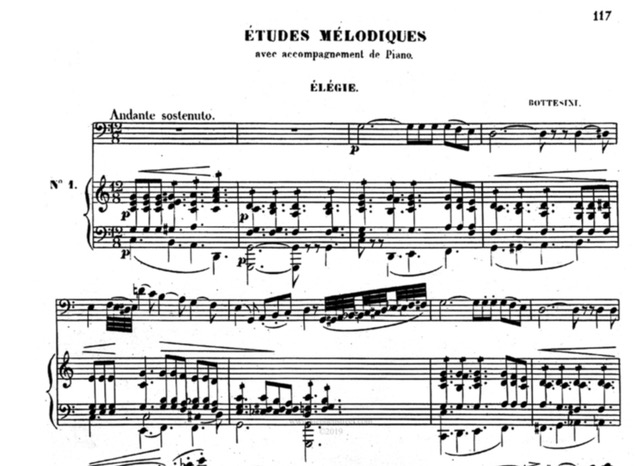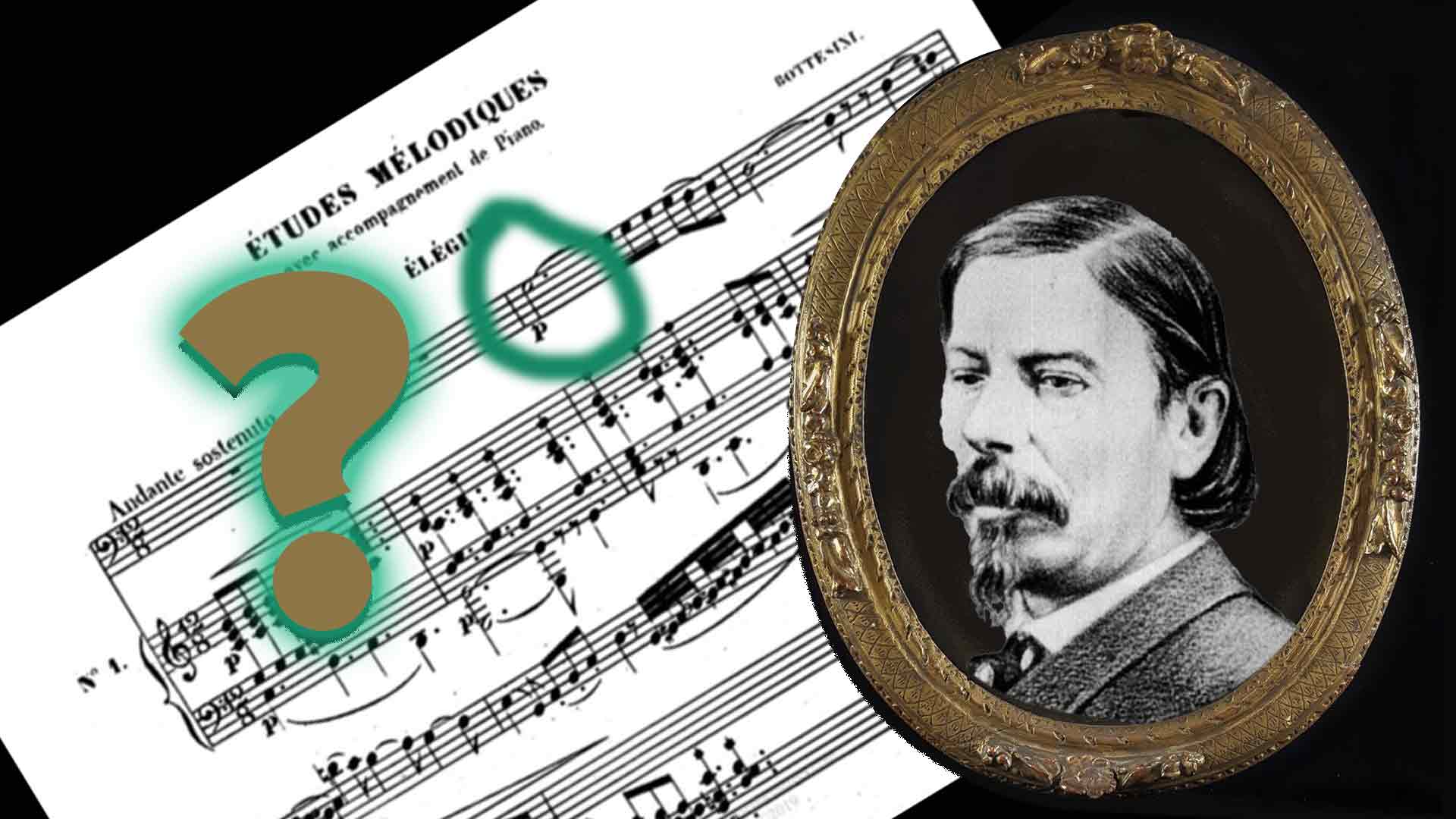Check out the Spanish translation of this article here!
We recently added Stephen Street‘s Urtext Edition of Bottesini’s Concerto di Bravura to our Sheet Music Store, prompting a common question:
Why is Bottesini’s music written down an octave?
The issue at hand is that Bottesini wrote all his solo bass music at sounding pitch rather than the standard practice of writing the bass part an octave higher.
Why did he do this?
I passed the question along to Stephen, who could help answer this much more clearly than me!
Stephen writes:
As you have rightly pointed out, the double bass part is written at pitch, but this has been done for a few reasons.
The ambition for the Bottesini Urtext project is to be as faithful to what Bottesini wrote as possible, with as little or no edits at all. One of the many reasons why errors have occurred in modern editions is due to publishers incorrectly transposing the octaves of different sections, combined with the choices of the editors themselves which has often led to confusion today to where certain passages are to be played.
Bottesini gives reason for this in his method book. Here’s the snippet where he talks about it:

As we have clearly mentioned we will, in this second part, write the notes without transposing them an octave higher. We shall avoid by that means a grave inconvenience: that of being obliged to use several Clefs, which, if inappropriately employed, complicate difficulties, embarrass the musician, and give rise to doubts. Thus although we give great compass to the solo Contre Basse we shall only require to use two clefs, by writing the note in its true place: the G clef and the F clef.
As you can see, it is an active choice by Bottesini to do this and so as an Urtext – I have to stay as faithful to Bottesini’s intentions as reasonably possible.
All of Bottesini’s autograph manuscripts for double bass as a soloist are written at sounding pitch. This is also for another couple of reasons:
- Bottesini tuned his bass differently from orchestral tuning or as high as a minor third higher than standard orchestral tuning.
- Bottesini being a composer was thinking from an orchestrators point of view and he would want to know the exact frequency to write on the score to be able to make choices of how he orchestrated around it no matter what tuning he felt was appropriate for the piece.
If we look at publications Bottesini commissioned in his life time, he preferred they were written at sounding pitch:

It is also worth noting that that he chose to write the whole second half of his method book at sounding pitch for this very reason, it is only in modern publications that it has been changed.
In short, however, I am just writing out an edition as Bottesini intended, it also gives context to modern editions as if it is written at pitch there is no question to where it is supposed to be played avoiding all the transposition errors that have cropped up today.
At least it is by an octave and not by a tritone or something horrible!
About Stephen Street
Stephen Street is a versatile bassist living in the UK. He studied under classical professors Chris West and Leon Bosch while continuing his jazz studies with Martin Speake and Simon Purcell. He is an active publisher and plans to create Urtext editions for all of Bottesini’s works.
You can find Stephen Street‘s Urtext Edition of Bottesini’s Concerto di Bravura in our Sheet Music Store.
Check out the Spanish translation of this article here!
Bass News Right To Your Inbox!
Subscribe to get our weekly newsletter covering the double bass world.

